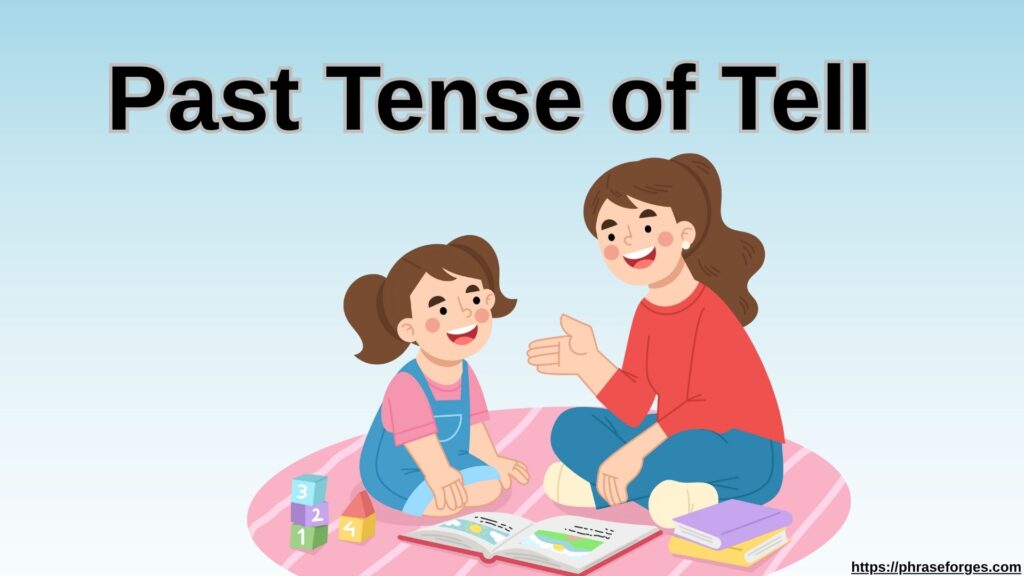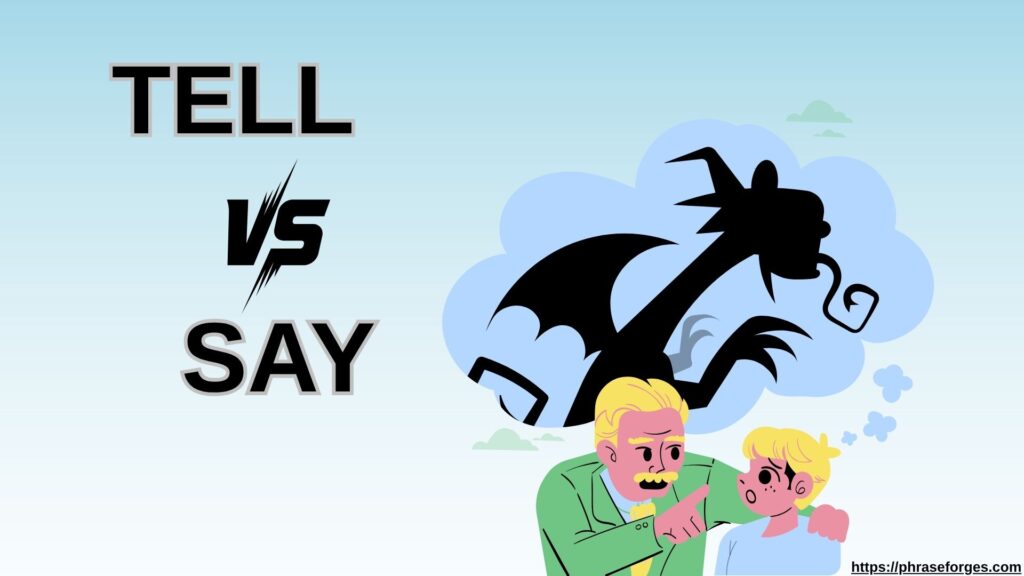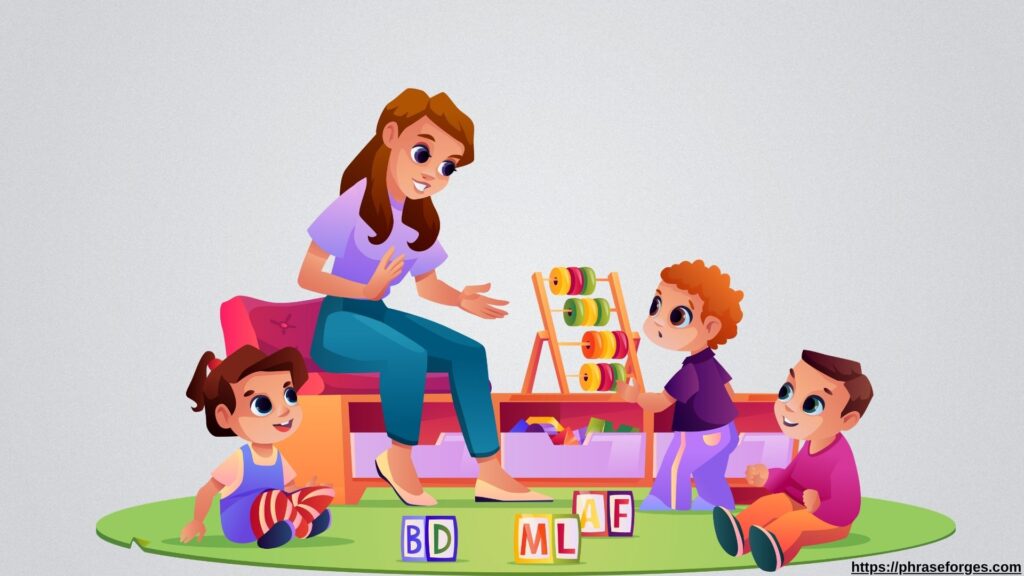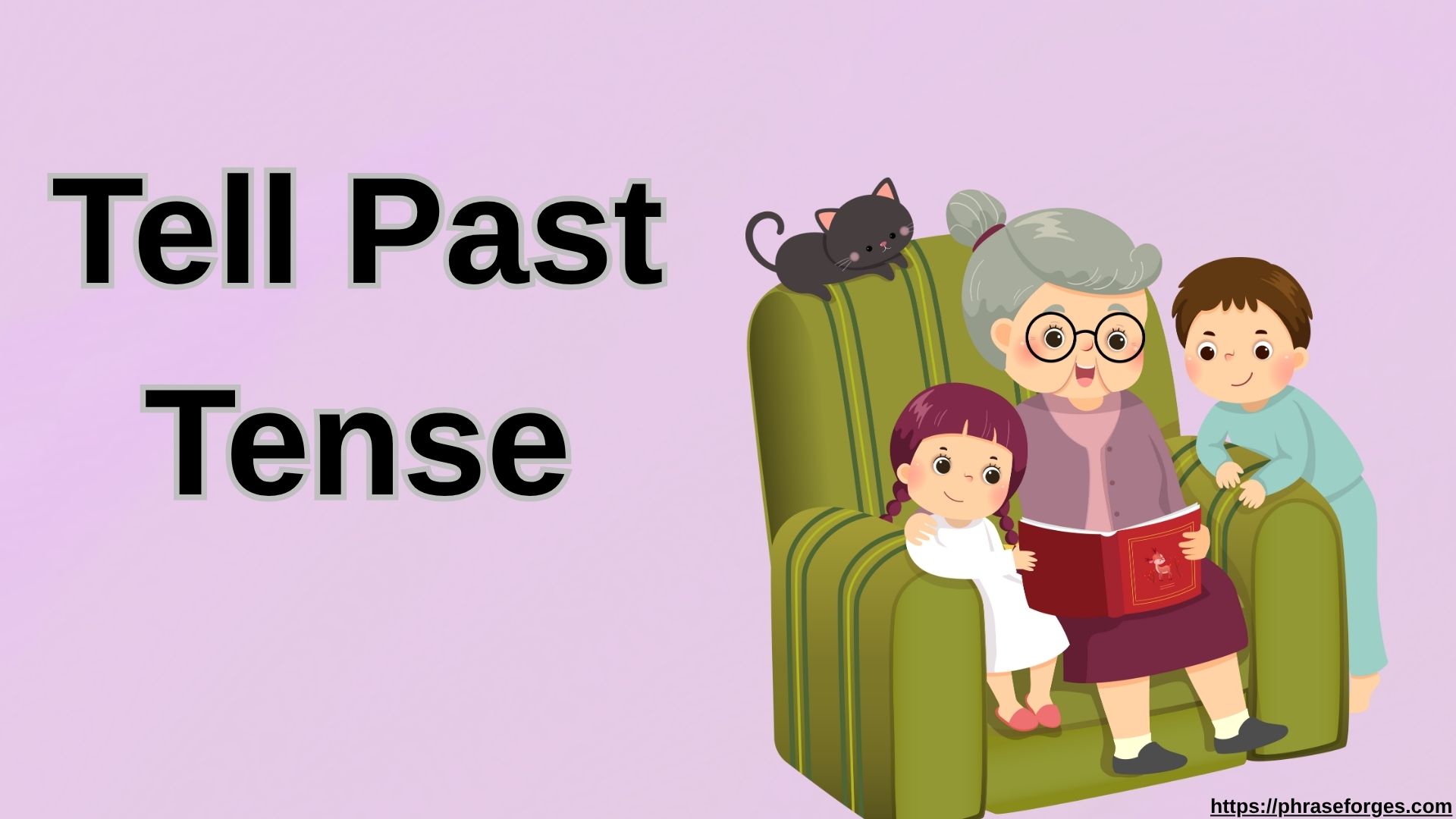Mastering English irregular verbs can feel tricky, and “tell” is a perfect example. Unlike regular verbs that simply add -ed in the past (like “walk” → “walked”), the past tense of tell is “told.” If you’ve ever wondered about the past form of tell, its usage in sentences, or how it compares to similar verbs like say or inform, this guide covers it all.
We’ll explore verb conjugation tables, grammar rules, common mistakes, and even practical email examples to make sure you never get it wrong.
What is the Past Tense of Tell?

The past tense of “tell” is told, and its past participle is also told. This makes it an irregular verb because it does not follow the standard “-ed” rule.
✅ Base Form: tell
✅ Past Tense: told
✅ Past Participle: told
✅ Present Participle: telling
Quick Definition:
- Tell (verb): to communicate something to someone, usually in spoken words.
📌 Example:
- I tell my students the rules every morning. (simple present)
- Yesterday, I told them about the test. (simple past)
- I have told them many times already. (present perfect)
Verb Conjugation Table for “Tell”
Here’s a quick reference table showing all forms of “tell” across tenses:
| Tense | Example Sentence |
|---|---|
| Simple Present | I tell the team about deadlines. |
| Simple Past | I told Sarah about the update. |
| Future | I will tell you tomorrow. |
| Present Continuous | I am telling them now. |
| Past Continuous | I was telling her a story. |
| Present Perfect | I have told you before. |
| Past Perfect | I had told him earlier. |
| Future Perfect | I will have told everyone by noon. |
Clear Rules & Patterns
While “tell” is irregular, using it correctly is straightforward once you remember these patterns:
- ✅ Use “told” for past events.
- ✅ Pair it with indirect objects (e.g., I told Sarah).
- ✅ Use auxiliary verbs (has, have, had) for perfect tenses: I have told you before.
- ❌ Never use “telled.” (Common mistake!)
Scenario Example: Past Tense in an Email
Here’s a practical email using “told” in context:
Subject: Follow-Up on Yesterday’s Meeting
Hi James,
I just wanted to confirm that I told the design team about the new deadlines during yesterday’s meeting. They were receptive, and I also told them to prioritize the homepage redesign.
Please let me know if there’s anything else I should communicate.
Best regards,
Emma
In this example, “told” refers to actions completed in the past.
Common Mistakes & Fixes
Even fluent speakers sometimes misuse “tell” past tense. Here are frequent errors:
- ❌ I telled her the news.
✅ I told her the news. - ❌ I have tell him yesterday.
✅ I told him yesterday. (Use simple past for a finished event.) - ❌ She was told me about it.
✅ She told me about it. (Incorrect auxiliary verb removed.)
Examples of Tell Past Tense in Context
Here are multiple real-life sentence examples using “told” naturally:
- In Conversation:
“Mark told me he’s moving to Chicago next month.” - In Narration:
“The witness told the police everything she saw.” - In Perfect Tense:
“I had told Alex about the party before he left town.”
Email Example: Reporting an Update
Subject: Client Feedback Shared
Hello Olivia,
As discussed, I told the client about our revised proposal. They appreciated our transparency and asked for a few minor edits. I also told them we’d deliver the final version by Friday.
Thanks,
Liam
Here, “told” clearly communicates completed past actions relevant to business contexts.
Difference Between “Tell” and “Say”

Many learners confuse tell vs. say. Here’s a quick guide:
- Tell → Focuses on whom you are informing.
“I told Anna the truth.” - Say → Focuses on the words spoken, without an object.
“I said, ‘Let’s leave early.'”
📌 Tip: You tell someone something, but you simply say something.
Idioms with “Tell”
Here are a few idioms using “tell” to add flavor to your writing:
- Tell it like it is: Speak honestly.
“Sophia always tells it like it is, even if it’s harsh.” - Live to tell the tale: Survive a difficult situation.
“After the hiking trip, we joked that we lived to tell the tale.” - Tell on someone: Inform authorities about wrongdoing.
“Kids sometimes tell on their classmates.”
Quick Reference Card: “Tell” Verb Forms
| Form | Example |
|---|---|
| Base Verb | I tell my kids bedtime stories. |
| Simple Past | I told them a funny one yesterday. |
| Past Participle | I have told that story before. |
| Present Participle | I’m telling it again now. |
Before & After Examples (Correcting Errors)
- ❌ “I have tell you many times.”
✅ “I have told you many times.” - ❌ “They telled me about it yesterday.”
✅ “They told me about it yesterday.”
Etymology of “Tell”

The verb “tell” comes from Old English “tellan”, meaning to count or recount, rooted in Proto-Germanic “taljan”, which referred to numbering or relating information in order. Over time, it evolved to mean communicating information.
Key Takeaways
- The past tense of tell is told, not “telled.”
- Use auxiliary verbs for perfect tenses (has told, had told).
- Always pair “tell” with an object (tell someone something).
- Remember: tell vs say depends on whether an object is present.
- Use email and conversation examples to reinforce learning.
Final Thought:
Once you internalize that “tell” is irregular (tell → told → told), using it becomes second nature. Whether you’re writing an email, telling a story, or simply chatting, these rules help you communicate more clearly and confidently.

